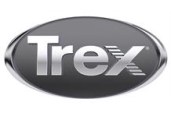Performance Metrics
Q: When you ask yourself “How are we doing?” what things do you use to gauge how well the company is doing?
A: I look at a couple of things from a metrics perspective. I look at our cash flow projection for the next 13 weeks every day. You’ve just got to know what the cash position is and whether you’re going to make the targets. We look at our inventory progress every day, our accounts receivable progress every day. We look at on a week basis how we’re doing on new job setups. For every job we get from a lead control perspective we set up a job. If you’re Pulte, you’ll have hundreds of jobs. We look at how many new job setups because that’s an indication of the relative volume we’re going to experience. We look at the typical things others look at: what are the permits in the market, what are our sales and profit, is our market share going up or down, are we getting greater penetration on our existing customers. I look at customer churn. Who didn’t buy from us last month.
Q: What about atmospherics?
A: We talk to the market managers on a monthly basis. We have half-hour scheduled meetings with all the 19 markets. That’s the best feedback you’re ever going to get. Certainly being out for the last seven weeks has been pretty helpful. You can’t get in front of enough customers to understand what’s going on with the business.
Green Building
Q: Were there any things that during those conversations that surprised you?
A: I think probably the biggest surprise is that there’s been so much talk about green building. So I asked every customer where they were in the green building process. It’s really all focused back to “We’re making our houses more energy efficient.” Or “customers don’t want to pay for it.” I thought the green thing would be more tangible. In a lot of markets, the push to green has been a little lighter (than I thought). … I really thought we’d see builders who’d say “Gosh, we’re really going to differentiate.” Especially on the custom side.
Remodelers
Q: What’s going to be your focus on remodeling? How do they figure in?
A: If you’re going to be committed in certain markets, and I’ll give you an example: In Southern California, 60% of our business is repair and remodel, which is why that business is still successful. We’ve seen a lot of builders that have taken on repair and remodel projects as a result of not being able to take on single-family homes. And that is business you have to assign somebody to. You can’t hope they come in. You have to have someone go out and learn what their needs are. Make sure you have the right products. … We haven’t lessened the commitment. We continue to do Pro Club, we continue to add resources where we can to chase that segment of the market. We were a little haphazard before; we had hoped people would just come to our locations and buy. That just doesn’t work.
Installed Sales
Q: Tell me how you see installed sales figuring into your total revenues.
A: I believe installed sales will become more and more important to us. As this thing rebounds, there’s going to be a shortage of labor. And I think our customers are going to ask us to provide those solutions. For instance, Raleigh is a big installed market for us. We install windows, doors, trim packages. We have a lot of expertise in this market. We’re trying to replicate that expertise, and do it as well everywhere else. In this market, probably a third of what we did at the peak was installed, and we think that’s the trend in the industry.
Physical Differences?
Q: I’m trying to get a sense of pre- and post-Chapter 11, how you physically are different in terms of where you’re investing your money. … If I were to go into Stock Building Supply in Paradise, Pa., or Clayton, N.C., would it look, feel, operate differently?
A: On the basic stuff of delivering the lumber and panel, the answer is no. You may be different in terms of offerings. In Houston, we need to add components.
Q: But if I’m in Clayton, are the employees different, do they wear different colors, do they have a rule they have to smile every 3.2 seconds? Are there feelings or operations there that I can notice?
A: I wouldn’t think so. … If I’m following your question. …
Q: My issue is, as builder or customer, how do I know the new Stock is any better than the old Stock?
A: What I would tell you is that it’s the same people providing the same services that they always did. The better comes from (the fact) that we’re focused on the market and we’ve built a company that can ride out the rest of the housing downturn and be there for you as your business comes back.
Q: What’s your vision of Stock 10 years from now? Do you see Stock becoming more of a national company? Do you see Stock getting back to what it was, or do you see it becoming something else?
A: 10 years is a long time period. I would expect that as housing recovers and we build out the potential in our markets, which to me is job 1, will we look to grow other markets? That’s going to depend on how housing evolves. Do we see in 10 years that the publicly traded builders own 50% of the starts and that you have to have a national presence to serve them, I think that dictates what your footprint looks like. If the home builder segment continues to be pretty fragmented, I don’t know that being a national player brings you anything. … From my perspective, it’s “let’s be the best in every market where we service.”
Q: How do you know when you can declare victory? How will you know that you are–even on a relative basis–the best?
A: I think that really comes back to what the customers in the market say … they say that “You’re who we want to do business with. You’re our preferred provider of products and services.” Then I think that’s a win. But you can’t lull yourself into believing (that view is permanent). That has to be a continuous effort to provide service at the level of support they need if you’re going to keep that. … At every single customer visit I go to I make sure we’re doing the right things, and ask where the gaps are and where they think we can improve.



